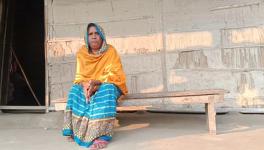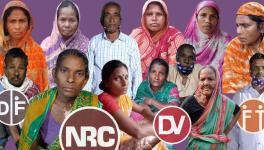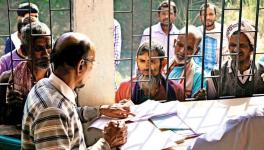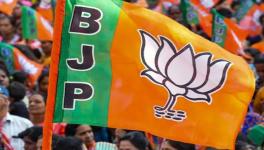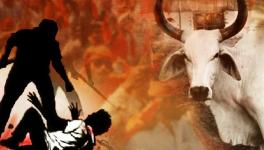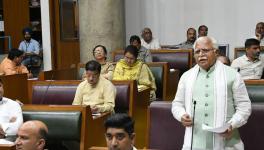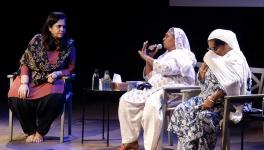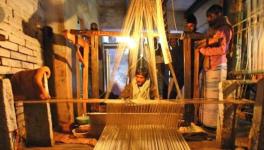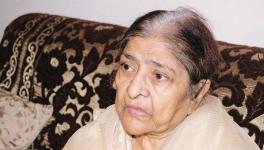All Faiths are Intertwined: TM Krishna
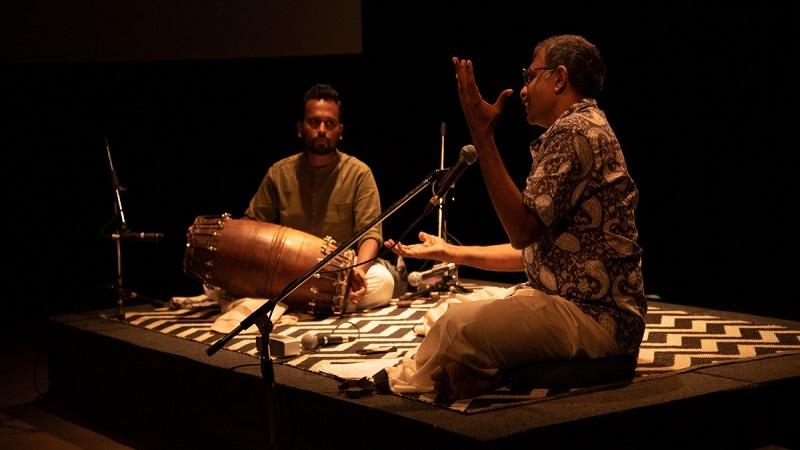
Activist, Carnatic vocalist, writer, author and Ramon Magsaysay award winner Thodur Madabusi Krishna a.k.a TM Krishna, recently performed an exclusive musical tribute to the memory of the innocents killed in the anti-Muslim Gujarat genocide of 2002. The event: Gujarat 2002 – 2022. Memories of Struggle, an evening of music and conversations organised by Citizens for Justice and Peace (CJP) also honoured the survivors who wait for justice, 20 years later. TM Krishna tells SabrangIndia, how the music was curated and how it has an even bigger role to play now when with communal tension, and open calls are given for genocide.
Memories of Struggle was not a typical event. How did you choose the songs you performed?
It was difficult to think of what to sing for such an event. The choices were made for faiths to speak to each other, and people speaking to their faith. The idea that all faiths have always spoken to each other. There is no faith that is independent. That notion is nationalistic. Every faith is intertwined not just in the past but in the contemporary sense also. They also enrich themselves from the unspoken receiving they get. Say, two people of different faith meet and there is an exchange, then there is sharing and learning. No faith can exist independently, it will die. I was thinking in terms of those intersections. Music does something to poetry, that is the difference between saying Allah, and singing Allah. That transcending is not limited to any one faith, there is no Hindu feeling of transcending or Muslim feeling of transcending, and atheists also transcend. You just want to find a language of mutual happiness. To be able to tap into that use the semantic and the lyrics to position these two having conversations and then when you bring in music it dissolves into the experience. At some point you don't know if I am singing of Allah or Rama… right? I was trying to tap into that kind of a conversation when I was choosing the songs.
You didn't know what the survivors were going to say…
I had no idea. I must tell you it was very difficult to listen to what they said… It was very hard to sing. At some point it even challenges what I was trying to say. It does question everything in a way. That is the role of art, there is a contradiction, I can't run away from it. What I said so far sounds philosophically fine, but when I am sitting there and I am hearing these people tell me about their lives there's a big difference between reading what is written and hearing a survivor speak. These are two different things. It is very difficult to even listen to it. That is a lived experience. There is a difference between me having compassion across faiths and a survivor [of communal violence] having compassion. I don't know if i would have it honestly. It is easy for me as my encounters are limited. Privilege allows me to push it back. But when you hear them [survivors] you wonder if Allah is the same as Eshwar.
Did you question yourself there?
I know I was very disturbed… that is a fact that it is not a universally accepted idea. We can talk about ganga jamuni tehzeeb, it sounds good… now when I say it, there is violence in me, when I say it at this point.
Did you have to detach from being an activist to get into artist mode?
I usually never do that, I just let the experience happen. I am not after musical perfection. There were moments I couldn't sing… I took a breath. That is what art shoudbe. Be alive to whatever is around you…. That is the essence of any art. That is my state at that point. How can I deny it? If it means I did not sing perfectly so be it. Exactly! I did not do too much alaap that was not the occasion.
What made you choose ‘Aye dekhne waalon’?
It was a song I bumped into two years ago, and I gave it to Shubha (Mudgal) It is one of the most beautiful songs on Krishna that I have heard. She tuned it for me. Around Diwali, when the whole Hindu-Muslim hungama was on, I decided it was time to sing it. It had something to say across faith, people, international borders. It is an Urdu bhajan actually. The description of Krishna is beautiful… it [the poem] is from pre-Partition, and it brings the identity of the land. It is a beautifully crafted poem, now it is an Urdu bhajan in its intent.
It would be a painful poem for a survivor to hear…
It is difficult because it does turn perception on its head in some ways. I think survivors understand this better than you and me. They are able to understand and connect with something larger that is not divided.
What does such a commemoration mean for the generation of today?
The man who played the mridangam does not even remember the riots. He was 10 years old and has no memory of it. What we forget is that most young people do not know anything about the riots. It is essential to remind yourself and people of it. What I got from speaking to survivors is that they were happy to see people who remembered this [Gujarat pogrom] and wanted to talk about it. It is important we do this, find ways in which we gather with people who have gone through it.
What about picking 'Vaishav Jan Toh', and 'Hum Dekhenge'?
Sometimes I wonder if a lot has been appropriated because we refused to give it direction. In Vaishnav jan toh there is a little subversion that I do when the line ‘Ram nam sunn’ comes I sing it as “Rahim” also. I do it, let somebody complain, I don't care. I first did it in Delhi on the day Amit Shah made a comment on Gandhi, that was when I first shifted that line on stage for the first time. I now sing it with that diversion. The idea is that you are also asking questions of ‘vaishnav jan toh’ that is important. You reclaim it because you have to find meaning and resonance in it today. Ram and Rahim flowed together. Noticing it says something, as does not noticing it says something. Those on the parochial side will notice it immediately.
Is there a move from the right wing to curb music as a tool of dissent?
I faced that before with my own form of Carnatic music, that you can't sing on Christ or Allah. But I said I will, do what you want. What is even scarier is the self-censorship that has happened in the artistic world. Let's be clear, everyone irrespective of government likes to control artists, but there is a textual difference now. Everybody [artists] is clear they do not want to disturb anything, they do not want confrontation. Violence that erupts even in small pockets is scary. While there is the larger monster, which is the establishment, but there are also smaller monsters and tentacles who operate in pockets. There is open fear. There are artists who are going overboard trying to convince people how ‘faithful’ ‘ nationalist’ they are… especially the privileged performing arts. They tell me privately why do you do it? My response is that this is my art. I am also worried about nostalgia, we remember someone who did something, but we don't remember what happened to those individuals at that time, their struggles and battles. People who believe in homogeneity know culture is one thing that can be manipulated. Everything else will follow. The liberals have still not woken up.
Is there hope? Dissent now means jail as seen for satirists, journalists, cartoonists, curbs on sources of income, where is the hope?
I think there is hope. You have always had artists fighting on, some of them you may not see in the news but there are many artists fighting the battle with songs, theatre productions in their own little way. I think many small things are happening, I would say there are many brave people who may not be spotlighted as much as the rest.
In a way that is good too…
That is good. There is hope, we also learn that there has to be a way of fighting this consciously, which is why Hum Dekhenge makes sense. We have to find the courage and the will to come together. Maybe it is a much longer road than we would think it is. The fear is what we will lose in the meantime.
Art has always recovered?
I think it does. I think that art and culture is very difficult to remove from society, that is why the responsibility on the artist is so much. If anybody can make it disappear it is the artist who can make art disappear not the State! If artists don't think that art is important by itself and in what it does in society art will disappear. It will become homogeneous, that is not art.
That is the vision of 'Hindu rashtra', or the Taliban who banned music…
Exactly, any kind of bigots. Because art is an experience of freedom, which is why they challenge it.
What does a young artist do now?
It is very easy to speak from my position of privilege, I probably will survive or if something happens to me there are at least 10 people who will speak up for me. I think the young people have to be strategic and smart about this. I will advise them to be smart. Learn, find your own ways to have conversations, I always think 100 small things have a bigger impact than one large thing. Don't self censor, be strategic. Know when to do what. Keep educating yourself, read, listen, watch. That is where
How was the overall experience for you emotionally?
It was emotionally exhausting. These things leave a mark, which is our learning. For anyone who participated, watched. At the end of the event I wondered what to say. Maybe we should do more such events. Maybe a small community event. What we need are not big events. They have their place too but we need small gatherings where we talk.
The one of its kind event that brought together conversations, music, and film was held at G5A , in Central Mumbai. The G5A Foundation for Contemporary Culture is envisioned and founded by Anuradha Parikh, an architect and filmmaker and its belief is “that art and culture have the power to catalyse change for the better.” The Black Box is its multi-functional space which too became a part of the conversations and came to life as the light design by Gurleen Judge took the participants on a journey connecting the harrowing past to a hopeful tomorrow.
The live recording of the entire event held at G5A may be viewed here.
Get the latest reports & analysis with people's perspective on Protests, movements & deep analytical videos, discussions of the current affairs in your Telegram app. Subscribe to NewsClick's Telegram channel & get Real-Time updates on stories, as they get published on our website.









